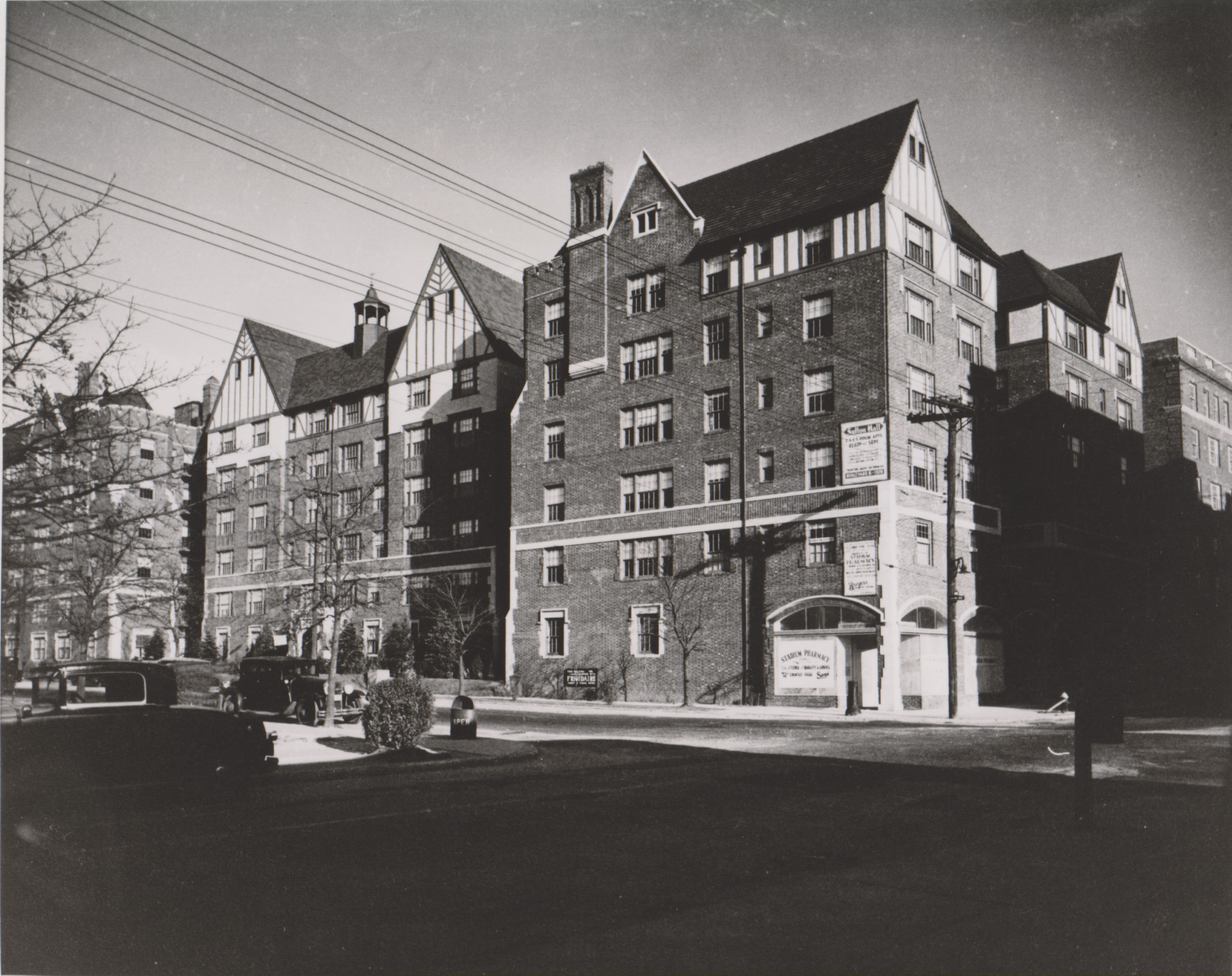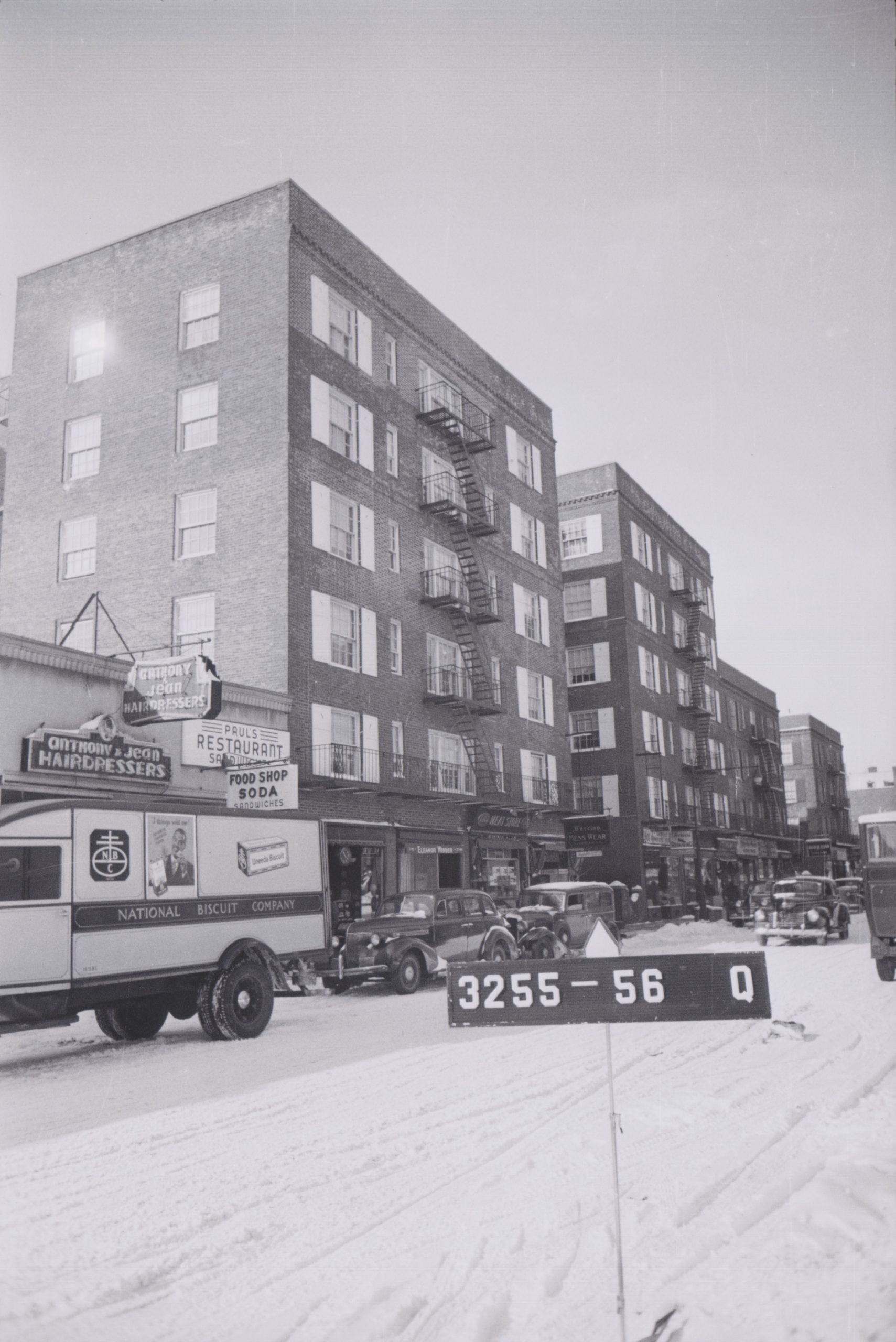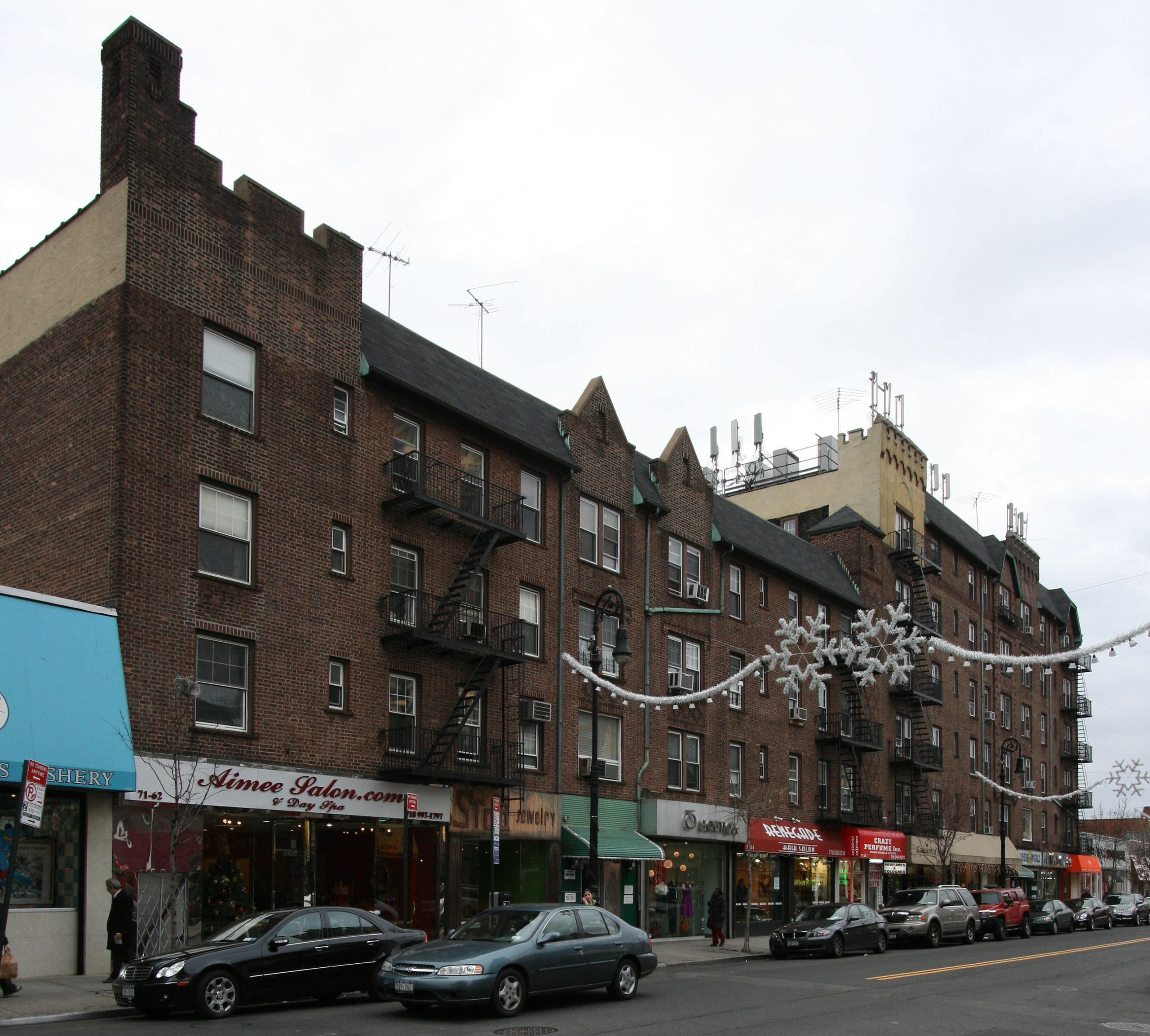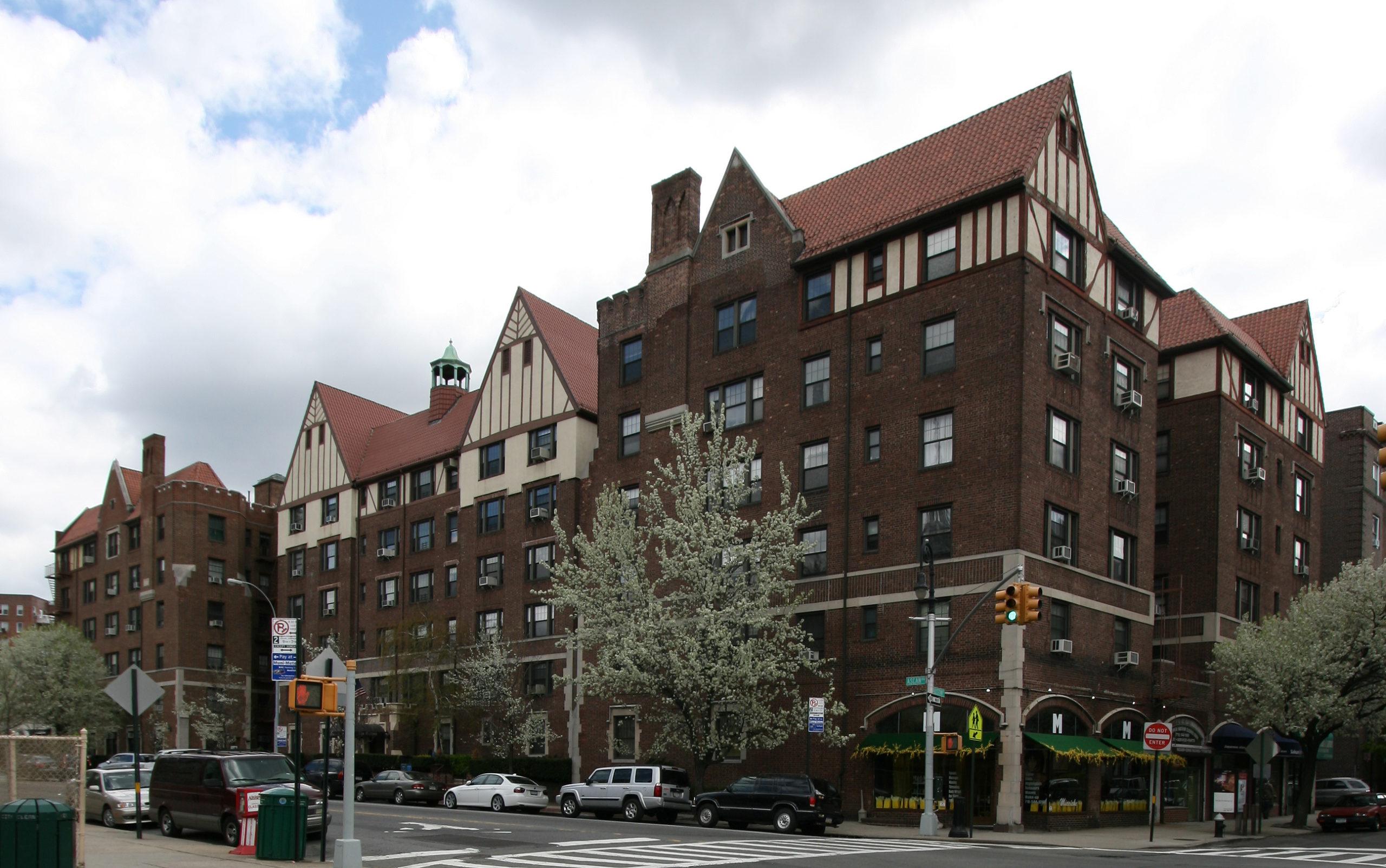By Michael Perlman
mperlman@queensledger.com

Sutton Hall, 109-14 Ascan Avenue.
At a time when historic buildings are being demolished or insensitively altered, a new bronze plaque program has been born in Forest Hills and Rego Park. Founded by Rego-Forest Preservation Council, this program will spotlight architecturally and culturally significant buildings by explaining their history and distinctive architecture on a plaque that will be installed on their façade.
Architectural features will be sampled and serve as a border or motif on a plaque to further celebrate its history, and vintage photos of the architect and the buildings will also be included. In some cases, buildings that lost their historic names will once again be appreciated. It is a belief that once property owners and residents are aware of a site’s unique characteristics and history, properties will be well-maintained and preserved.
Forest Hills was named in 1906 by Cord Meyer Development Company, whereas Rego Park became official in 1923 by the Real Good Construction Company. Early to mid-20th century buildings granted a personalized experience for residents, newcomers, and visitors, with unique craftsmanship pertaining to styles that ranged from Tudor and Colonial to Art Deco. Stately apartment buildings, religious sites, theaters, and commercial sites were designed by architects who were often raised in Europe, and they were built to last.
Now Academy Engraving is partnering with Rego-Forest Preservation Council to produce a trail of bronze plaques. The firm designs the Broadway League’s Tony Award for the past 29 years, in addition to numerous signs and plaques throughout New York City from memorial tablets to NYC park name plaques. Notable clients include Baccarat, Lalique, Rolex, and Bulgari. “We are proud to be a sign, awards, and custom engraving vendor based in Manhattan,” said founder and president Frank DiBella.
He explained, “I feel it is extremely important to add a marker or plaque that explains the architectural significance and history of historic buildings. It definitely helps to stress the importance of preservation with the property owner and neighbors.”
Since DiBella’s youth in Gravesend, Brooklyn, he has admired and respected historic homes and buildings. He said, “It was always exciting to discover a home built in the late 1700s and realize how many families came and went, and that home was still there after all that time. My favorite was Lady Moody’s home at 27 Gravesend Neck Road, which was famous in the neighborhood. My friends and I were proud it was in our own backyard. We also had the Wyckoff Bennett Homestead, a very interesting place built before the Revolutionary War.”
Some buildings began expressing interest in the new plaque program. Dorothy Schreiber is board president of Hawthorne Court at 72-34 Austin Street, a Georgian Colonial residence to 59 families since 1931. It was erected by Cord Meyer Development Company and features a court entranceway, a large decorative balcony, and dentil cornices, but the ornamental shutters are long-gone. She explained, “Just as important as our personal and family histories are, is our surrounding physical history. Familiarity with images from our past binds us and brings continuity to our lives. Memories unite us with those we lost and help ground us in the present.”

Hawthorne Court circa 1940, Tax photo courtesy of Municipal Archives.
Schreiber holds good expectations for the plaque program. “It will help illuminate the historical presence of certain buildings and hopefully induce building owners to maintain and restore the unique village-like ambiance of our area, since presently Austin Street looks more like a shopping mall than a quaint village. A plaque will bring something special to our building.”
Kenney Vairo manages the 6-story Forest Hills Towers at 71-50 Austin Street and its sister building, the 4-story Edna Jean at 71-58 Austin Street, which were completed in 1928 in the Tudor Medieval style. At “The Towers,” 1 to 5 rooms could be rented from $40 to $100 and was advertised as having good-sized light rooms and being a half block to Station Square and convenient to shopping. It is distinguished by battlements, a slate pitched roof, and brickwork. An anticipated attraction by prospective tenants was a direct stairway leading from the building to the LIRR station.

The Edna Jean & Forest Hills Towers, 2008 photo by Michael Perlman
“My grandfather, Edward P Kenney, developed the buildings on Austin Street,” said Vairo, who takes pride in his family history in Forest Hills. His mother, whose maiden name was Edna Jean Kenney, always went by Jean, which is how one of the two residences was named.
He said, “My grandfather was a real estate developer and a pharmacist. He also owned three stores down the street where Chipotle is located. He owned a well-known bar and restaurant called Kenney’s. When he retired, my mother took over the real estate part at 23. She attended PS 101, the Kew-Forest School, and Maryland College for Women. She was a philanthropist and always cared about people. She was also an arborist.” Later in life, she lived in Florida and passed away in 2006. Earlier this fall, his brother Peter Vairo, who was the landlord and a much-admired friend to many community residents, also passed away.
Coming home to Sutton Hall at 109-14 Ascan Avenue offers a grand and charming experience. Built in 1929 to 1931 by El-Walt Realty Corp, it is a foremost example of urban planning with English Manor design, evident by Medieval wood doors with stained glass bearing knights and shields, a cupola, a slate pitched roof, a half-timber and brick facade, battlements, and inner and outer landscaped courts and recessed facades to maximize light, air, and neighborliness. It was called “a revelation in modern living” in a 1932 edition of The New York Sun. It was designed by Benjamin Braunstein, a Constantinople native and award-winning architect, who was trained at the Hebrew Technical Institute and at the Beaux Arts Society. He also designed several nearby buildings including Valeria Arms, The Chatham, Marion Court, Remo Hall, Jupiter Court, the Holland House, Tilden Arms, and The Wakefield.

Sutton Hall, Photo by Michael Perlman
“It is very important and delightful to preserve the history of our beautiful community, and hopefully newcomers will pass it down to the next group of newcomers,” said Leslie Lowry, an over 40-year resident. “The plaques will show how proud and meaningful our homes are to us. When I enter my lobby, it makes me feel like I am entering an old castle, and my guests are always impressed. My apartment has very large and beautiful rooms with many archways, and several walls are stucco, which is very charming.”
To acquire a plaque in honor of your building, contact mperlman@queensledger.com




